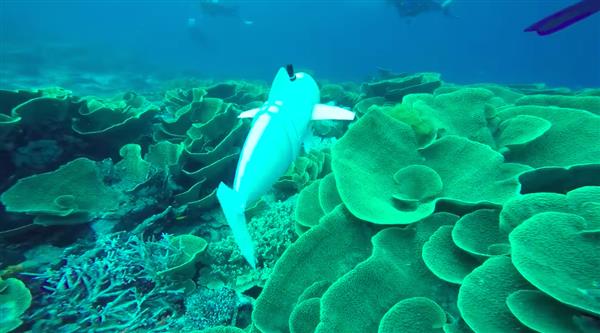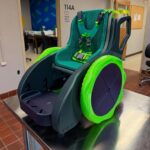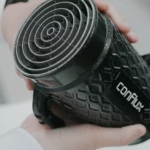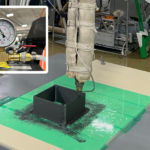MIT’s Computer Science and Artificial Intelligence Laboratory (CSAIL) has developed an unmanned, underwater observation robot. They dubbed the machine ‘SoFi’, shorthand for soft fish. The technology can aid researchers in photographically documenting and monitoring oceanic and marine life.
The machine itself is actually rather simple on paper. It consists of a camera, a motor, and the type of lithium polymer battery present in most smartphones. The motor uses something akin to hydraulic motion, pumping water into bicameral chambers in its tail area to produce motion much in the same way as pistons do for a car engine. As a result of this mechanism, it can swim at depths of about 50 feet for 40 minutes at a time.
Another fascinating feature of SoFi is that its control interface is actually a Super Nintendo controller with some adjustments. The researchers took a standard controller, made it waterproof and equipped it with a custom acoustic communications system that allows them to regulate SoFi’s speed and motion. The system uses ultra-sonic waves with wavelengths of 30 to 36 kilohertz to communicate.
SoFi monitors and relays all the necessary visual information using a fish eye lens. The robot’s fish-like form helps it blend into the marine environment, allowing for more in-depth observation. CSAIL’s design is actually very innovative in many respects. It’s compact and remote-controlled. It also swims with all the necessary equipment without the need of traditional propeller system.
Soft Robotics in Additive Manufacturing
The original purpose of this sort of robot was to invent something that wouldn’t be too invasive to the ecology of marine life. This required that the researchers build a machine that was small and could closely mimic natural life. Due to its size it can explore areas that most other vessels can not.
SoFi’s head, which houses all its electronic components, was 3D printed. The researchers constructed the tail and body from a blend of different materials including silicone rubber and flexible plastic. CSAIL’s usage of soft materials is an important factor in how smoothly SoFi is capable of moving.
Even though the robot is extraordinary, the team still considers it a first step. In future iterations, they want to add sensors that will automatically trace real fish and follow them autonomously. Eventually, they hope to use SoFi as the start of a state of the art undersea research observatory.











